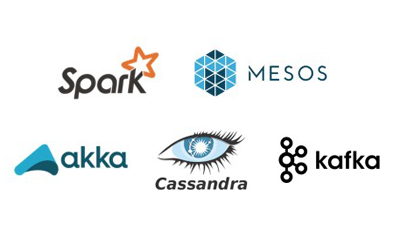The Cassandra Sink provided by alpakka is meant
to be used when you want to push elements from your stream into a Cassandra table. The example on the website shows a
simple use case which persists an integer to a table. Here we look at how we can persist a case class to a target table.
case class Customer(customerId: UUID, age: Int, pay: Long)One big gotcha is figuring out how to write the BoundStatement in Scala which involves performing type conversions to
Java since the underlying Datastax driver that is used to communicate with Cassandra is Java based.
val cassandraSink: Sink[Customer, Future[Done]] = {
implicit val session: Session = ...
val insertPreparedStatement: PreparedStatement = session.prepare(s"INSERT INTO customers_by_customer_id(customerId, age, pay) VALUES (?, ?, ?)")
// you need to convert each Scala type to a Java type when binding values to the prepared statement in order to create the bound statement
// we deconstruct our Scala case class and explicitly use the Java type instead of the Scala type on the destructured fields
val statementBinder: (Customer, PreparedStatement) => BoundStatement = (c, ps) => ps.bind(c.customerId: java.util.UUID, c.age: java.lang.Integer, c.pay: java.lang.Long)
CassandraSink[Customer](parallelism = 10, statement = insertPreparedStatement, statementBinder = statementBinder)
}Cassandra Table
The Cassandra table schema is provided here:
CREATE TABLE customers_by_customer_id (
customerId uuid,
age int,
pay bigint,
PRIMARY KEY((customerid))
);Local development
If you have Docker and Docker Compose installed, just run docker-compose up to bring up Cassandra in a Docker
container.




